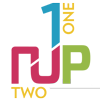Namibian ICT developing faster than African average
Namibia has shown significant improvement in connectivity and the penetration of broadband, but still lags behind the Southern African frontrunners in the International Telecommunications Union's (ITU's) ICT Development Index (IDI) for 2025 scoring 72.5 in 2025 compared to 67.3 in 2024 – an 8% year-on-year improvement which is yet another improvement on the 6% year-on-year development noted in 2024. While still trailing behind South Africa and Botswana, Namibia is developing faster than the regional average.The IDI measures countries across two key pillars; universal connectivity, which examines infrastructure and access, and meaningful connectivity, which focuses on adoption and effective use of digital technologies.
Despite encouraging improvements, there is still great room for improvement as the digital divide persists. Namibia scored 59.4 points for its universal connectivity and 85.7 for meaningful connectivity – the difference representing a subpopulus that is connected to the internet, but cannot meaningfully benefit from it. Factors considered to determine meaningful connectivity as opposed to universal connectivity are the affordability of data and devices as well as data usage per subscription for both mobile and fixed broadband subcriptions – an indicator of how intensively, and by extension meaningfully, mobile subscribers are using the internet.
While Namibia's overall performance is encouraging, the data reveals a persistent digital divide. In 2025, the country scored 59.4 points for Universal
"Namibia's meaningful connectivity score demonstrates that when people have access to digital services, they're using them effectively," notes the regional analysis of the report. "However, the universal connectivity bottleneck suggests that infrastructure gaps and affordability issues are still preventing broader population access."
According to the ITU, 64.4% of Namibians are internet users (* internet users are defined as individuals who have used the internet in the last three months) with 78% of Namibian households having access to the internet. Mobile broadband subscriptions are used by 58.6% of Namibians with 89% 3G mobile broadband population coverage and 85% 4G/LTE population coverage.
A mobile data and voice basket costs Namibian consumers on average 1.4% of the gross national income per capita and a fixed boradband basket costs roughly 7.7% of the gross national income per capita.
Namibia now ranks in the middle tier of Southern African countries with 8.4 points to gain to South Africa, who scored 80.9 on the index, and 7.1 points to make up to Botswana, who scored 79.6 points. Namibia, however, still remains ahead of other peers like Angola (53.7 in 2025; 49.9 in 2024).
Despite these gains, Namibia still lags behind global averages, which stood at 74.8 in this reporting period.
AFRICA & BEYOND
Namibia's progress occurs parallel to digital transformation on the continent, which achieved a 16% improvement in 2025 reaching an average score of 56 points compared to 49 in 2024.
“In Southern Africa, South Africa (80.9) and Botswana (79.6) continue to lead, with Namibia (72.5) consolidating its position above the regional average, while Angola remains among the lowest performers at 53.7,” states the report.
Africa is thus the fastest-growing ITU region globally, despite significant variation by country.
The continental improvement from an average of 50.3 in 2024 indicates a larger trend of digital acceleration across Africa.
With a substantial performance gap between African countries – ranging from 84.7 to 21.3 in 2024 – internet usage on average on the continent stands at 39.9%. An estimated 47% of households on the continent have internet access with the costs of mobile data averaging 12.9% of gross national income. Fixed broadband connections cost on average 23.6% of gross national income in African context.
"The meaningful connectivity pillar is largely driven by infrastructure indicators, where it is arguably easier to achieve high scores,
as performance depends heavily on network deployment by operators and their investment strategies. In contrast, the universal connectivity pillar consists of indicators related to Internet use and adoption, which rely more on consumer behaviour and tend to evolve more slowly. These indicators also reflect a persistent usage gap: despite widespread infrastructure availability, many people still do not use the Internet," states the report.
– irene-mari@nmh-hub.com.na




Comments
My Zone
No comments have been left on this article